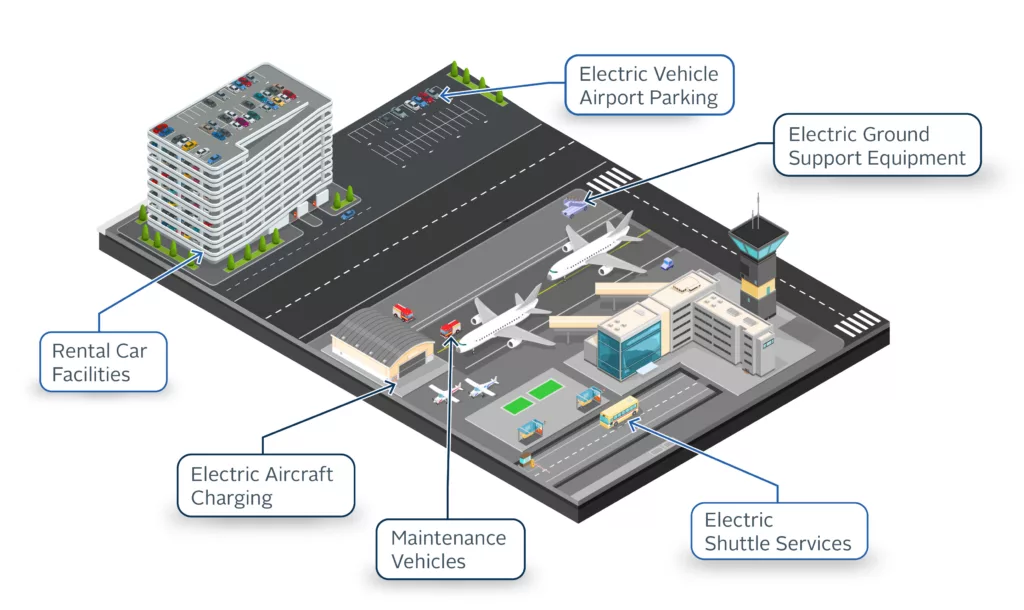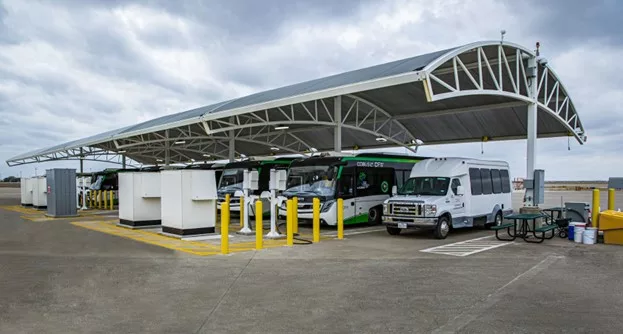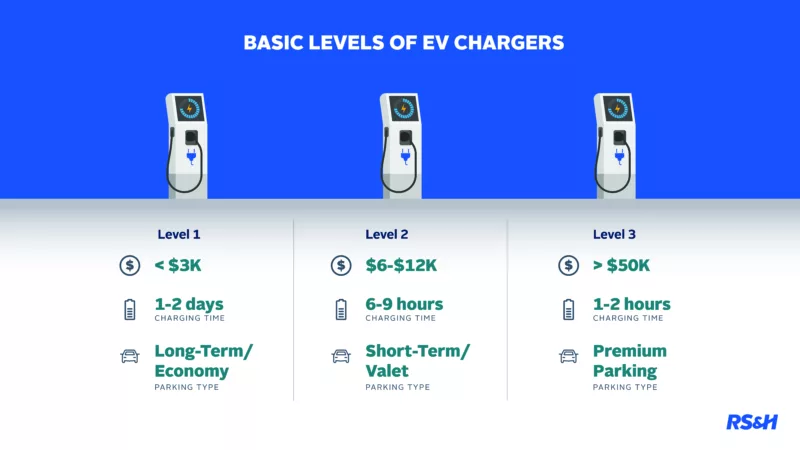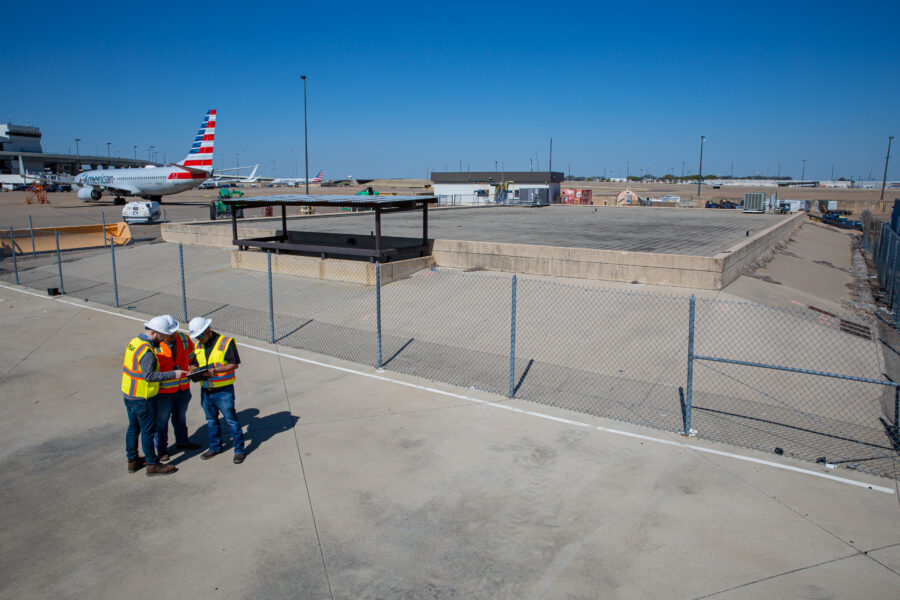Airport Emissions Reduced Through Electrification Planning
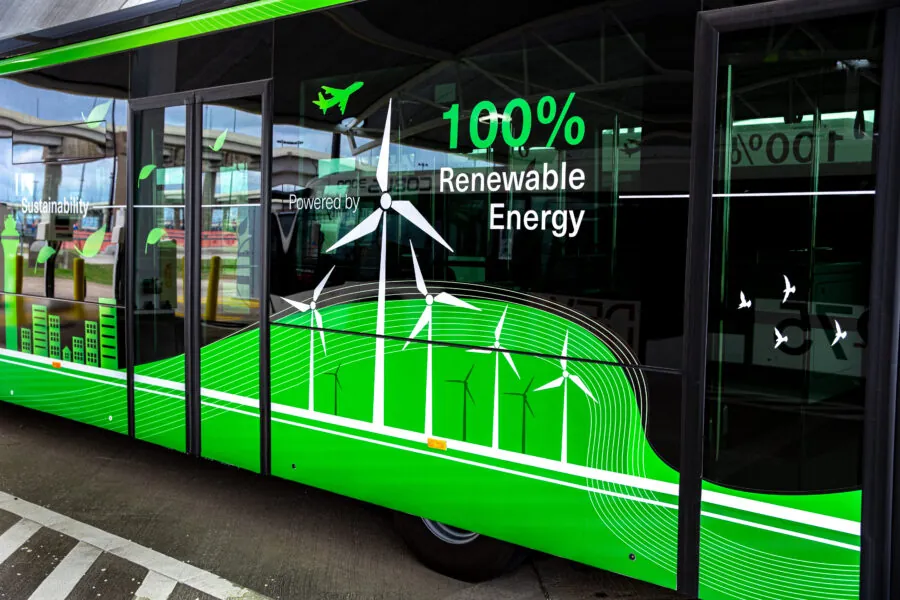
Across the United States, airports are making bold moves to create a more sustainable future for air travel. Working with the Federal Aviation Administration (FAA) with the goal of net-zero emissions by 2050, airports are making investments in sustainable infrastructure that improve airport operations, efficiency and the passenger experience. According to the Airports Council International – North America (ACI-NA), reducing emissions through new electric vehicle (EV) integration investments is a key focus area for airports. Planning and designing EV infrastructure supports airports’ sustainability goals and reduces greenhouse gas emissions. By fostering electric transportation, airports strengthen their position at the center of modern mobility.
At RS&H, our aviation experts are proactively engaging with clients to achieve their sustainability and resilience goals through the thoughtful integration of electric vehicle charging infrastructure to meet the demand for EV adoption. We understand how to navigate the integration of EV infrastructure throughout an airport campus, and we carefully consider all avenues, including planning, design, engineering and construction administration.
Landside and Airside Design Electrification Solutions
RS&H recently provided design and engineering services at Dallas Fort Worth International Airport to support charging infrastructure for electric buses at the airport’s bus maintenance facility. The project enabled the airport to reduce ozone emissions, lower operational and maintenance costs and improve transportation services by providing the design of the electrical distribution for two new bus charging stations. This project serves as a pilot project to evaluate and test electric bus use on landside route-based bus services, building support for a broader and long-term approach to fleet electrification.
In addition to providing charging support for landside transportation services, RS&H completed projects to install charging infrastructure for buses used for ground loading operations, tugs, baggage carts and small ramp vehicles. This effort included placing a new transformer and installing new main switchgear, conduit and 150KW chargers. The project allows the airport to continue to reduce its carbon footprint.
Adopting Charging Stations for Landside
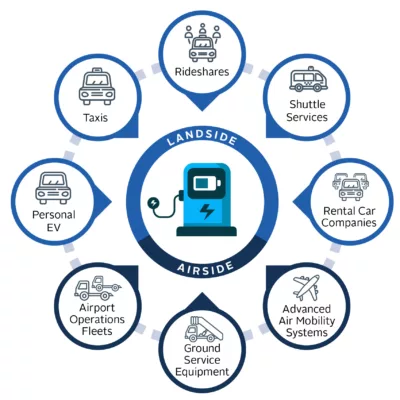
Our expert aviation specialists understand the varied types of chargers to inform clients on what infrastructure is needed and where, considering the cost-effectiveness, revenue opportunities and operational efficiencies of our recommendations. We conduct analyses to anticipate our clients’ future charging needs, considering passengers’ parking patterns, local EV adoption data, rental car agency trends, and more, to determine the infrastructure needed to support the airport’s variety of needs. While charging infrastructure is necessary throughout an airport campus for a broad range of services, the number of chargers and the charging capacity varies significantly.
EV charging stations can include Level 1 chargers, Level 2 chargers and Level 3 also known as Direct Current Fast Chargers (DCFC).
- Level 1 chargers are the least expensive to install, as they plug directly into 120-volt AC outlets. With a reduced power output, they can require more than 24 hours of charge time to fully charge an empty EV battery. While most public facilities cannot leverage Level 1 chargers due to the long charge time, airport customers are likely to park their vehicles for a day or longer, which allows airports to utilize Level 1 chargers in airport parking lots and garages.
- Level 2 chargers operate between 208-240 volts with greater power output for faster charging and are well suited to charging vehicles in hours. These chargers could be ideal for airport operations fleet vehicles with extended periods of downtime.
- Level 3 or DCFCs are the most expensive chargers to install and can fully charge a battery in less than an hour.
Coordination is a Key Factor in Power Supply and Teamwork
Our team knows how and when to engage utility companies to coordinate future projects to address power supply shortcomings well ahead of electric infrastructure installation. The addition of EV charging infrastructure at scale throughout an airport campus comes with an immense demand for power, requiring close coordination with local utility providers. As EV adoption grows, the increased power demand grows in tandem. Designing to meet not just the current needs of an airport, but future needs is critical to any successful electrification project. To meet the needs of an electrified future, airports and utility companies will need to collaborate to upgrade electric service capabilities, an activity that requires years of advanced planning. Some utility companies will be challenged to quickly provide enough power to meet demand, particularly those in states that are constrained by more stringent regulations around power generation.
Our designers and engineers have knowledge of the electric charging products being installed, the power needed to accommodate these products, where to locate chargers to connect to new and existing infrastructure, and how to integrate emerging energy efficiency technologies. Electrical engineers consider every critical detail to deliver a successful installation of new electric infrastructure including:
- Utility service coordination
- Equipment procurement lead times
- Electrical resiliency
- Energy monitoring and optimization
- On-site renewables
- Power system management
- New branch circuiting to power charging stations
With our planners and engineers coordinating with one another throughout a project, they can work through any hurdle such as procurement of equipment and coordination with utilities early, to resolve challenges in the planning stages. The sooner our designers and engineers are engaged in a project, the more solutions they can provide in collaboration with our planners to deliver cost-effective projects.
Planning to Expect the Unexpected
As the demand for electric power increases to operate airport facilities, plans to maintain operations in the event of significant power failures are paramount. Our experts advise clients on opportunities for redundant power supplies including site-powered microgrids that protect airport operations if their utility is temporarily unable to provide power. While planning to maintain airport operations during power failures is essential, we advise solutions that make smart use of our clients’ budgets, planning for the unexpected while balancing costs.
With our in-house capabilities in aviation planning services, we consider all aspects of EV charging infrastructure integration for our airport clients. At a major hub U.S. airport, we are conducting electrification planning to identify short and long-term needs for the client. We plan proactively to prevent spending resources on equipment that quickly becomes obsolete. These key principles of the planning process include:
Comprehensive: We conduct research and provide recommendations on the number and type of chargers needed to support an airport’s operations.
Creative: We explore current trends and future projections to prepare our clients for a world of rapidly changing technologies.
Sustainable: We recognize the demand, and that the airport can recover operational and maintenance costs to provide charging infrastructure at scale, which continues to provide a high-quality, high-tech experience for passengers.
Collaborative: We work with airport clients and partner with our in-house designers and engineers to advise on projects as they are being planned.
Financially Feasible: To further support our clients in their electrification initiatives, we help them realize available funding options that can be used to pay for their projects.
Don’t Leave Money on the Table
To further support our clients in their electrification initiatives, we help them realize available funding options that can be used to pay for their projects. Thanks to recent federal initiatives, more funding is available for electrification infrastructure than ever. We have experience with grant strategy and advise clients on which parts of the project may be easily funded through grants and which costs should be covered by the airport. From application development to application package and submittal, working with our clients to access additional funding maximizes the chances of success. Here are 4 Tips and Best Practices to Secure Federal Grant Funding.
The Buy American Act provides funding for electrification products that meet specific requirements. Our knowledge of electrification product manufacturers means we know what products meet the requirements of the Buy American Act and are readily available, to avoid procurement related schedule delays while meeting budgetary needs.
RS&H at Your Service
As a full-service planning, design, and engineering firm, RS&H is working hand in hand with airport clients to support their goal of more sustainable air travel, including working toward net-zero emissions by 2050. RS&H’s expertise in electrification enables our airport clients to drive electric vehicles forward to reduce the nation’s greenhouse gas emissions. Our planners, designers and engineers understand our clients’ long and short-term goals and provide the expertise and technical experience to meet the needs of airports through well-planned, cost-effective electrification projects.

